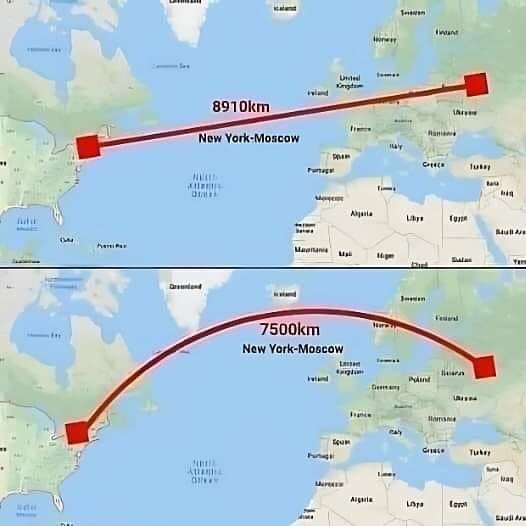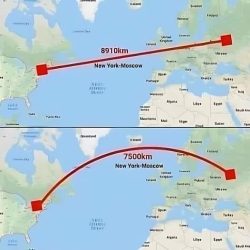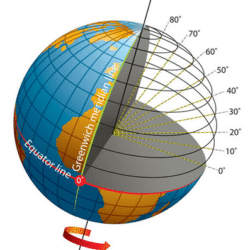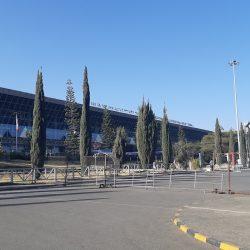Airplane routes are curved instead of straight due to the Earth’s spherical shape and the principles of geometry that govern the shortest paths on a curved surface. This seemingly counterintuitive phenomenon can be explained through concepts from both geometry and aviation planning.
Understanding Straight Lines and Curved Paths
- The Illusion of Straight Lines on Maps
On a flat, two-dimensional map, the shortest distance between two points appears to be a straight line. However, maps distort reality because they attempt to project the three-dimensional surface of the Earth onto a two-dimensional plane, leading to inaccuracies. This is why a route that looks straight on a map may not be the shortest in real-world terms. - The Geodesic Curve: Shortest Path on a Sphere
The Earth’s surface is roughly spherical, and the shortest distance between two points on a sphere is a curve called a geodesic. In mathematical terms, a geodesic is the equivalent of a straight line but adapted to a curved surface. Airplanes follow these geodesic paths to optimize travel time and fuel efficiency.
How Geometry Shapes Flight Routes
- Riemannian Geometry
The concept of geodesics originates from Riemannian geometry, which deals with curved spaces. On a sphere, the geodesic is part of a great circle—any circle that divides the Earth into two equal halves. For example, the equator is a great circle, as are routes traced along lines of longitude. - Projection and Distortion on Maps
Flat maps, such as the commonly used Mercator projection, exaggerate distances and shapes, especially near the poles. This is why flight paths on a map appear curved but are actually the shortest route when followed on the Earth’s surface.
Practical Reasons for Curved Flight Paths
- Fuel Efficiency and Time Savings
By adhering to geodesic routes, airlines minimize the distance flown, saving both time and fuel. Even small reductions in distance can lead to significant cost savings over thousands of flights annually. - Weather and Air Traffic Control
While geodesics provide the foundational principle, pilots and flight planners must also account for weather conditions, wind patterns, and air traffic control restrictions, which can further influence the path of a flight. - Earth’s Rotation and Jet Streams
Airplanes often adjust their routes to take advantage of natural phenomena like jet streams—strong air currents that can speed up flights or, conversely, slow them down if not considered.
Examples of Curved Routes in Action
- Flights between North America and Asia often pass over the Arctic Circle because it represents the geodesic path.
- Similarly, transatlantic flights between the United States and Europe follow curved routes that cross near Greenland for the same reason.

Key Takeaway
Airplane routes appear curved on flat maps because they are following the geodesic, or the shortest path on the Earth’s spherical surface. This approach saves time, reduces fuel consumption, and exemplifies how our understanding of geometry adapts to the natural curvature of our planet.
By embracing the science behind curved routes, airlines achieve efficiency while passengers experience shorter travel times—all thanks to the elegant mathematics of Riemannian geometry and the Earth’s spherical shape.





